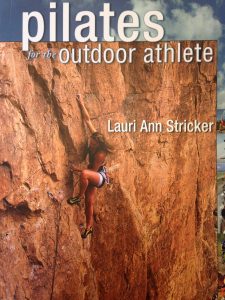 Walking is something that people have done from the beginning of time. It was a requirement of life as much as breathing and eating. Now people plan their walks, count their steps, monitor their heart rate, calculate how far they’ve gone, and how fast.
Walking is something that people have done from the beginning of time. It was a requirement of life as much as breathing and eating. Now people plan their walks, count their steps, monitor their heart rate, calculate how far they’ve gone, and how fast.
I walk all day – up and down the stairs, around the grocery store, in and out of buildings, and inside my Pilates studio. A few times a week I actually “take a walk”. If the sun is shinning and the wind is calm, I praise the Almighty. I love to walk, yet I have to plan it. Then there’s the question of… do I take my phone or not? I have little kids, so of course I take it. I’ll be no more than a few paces from the car, when I hear a metallic chime go “ting” followed by another. By the third “ting” I’ve given in to checking my texts – while still walking! Sound familiar? When I was three years old my grandfather used to take me for long walks. My mother said I’d come home exhausted and hysterical. Walking doesn’t have to be a big deal, it just has to be purposeful.
Maybe you’re someone who takes walks regularly. Maybe you’re the guy strolling the Lake or trekking the Meadow rain or shine – snow or sleet. Maybe you’re the lady power trooping to King Soopers – and back! Or maybe you only walk inside King Soopers because you have to buy groceries. I won’t tell you where to walk, how often, or how fast. Instead, I want to talk to you about how you walk, more specifically your gait. Gait is defined as the way in which you walk, step, or stride. If you’ve had injuries, played sports, have a scoliosis, or lived at all – it will affect your gait. Your gait is like a fingerprint – unique to you alone. Every movement you make tells a story of your life.
We all know the importance of walking for cardiovascular health, but did you know that walking tones your body, strengthens the core, and improves your balance? Walking is a full body activity – and it’s free! So breathe the fresh air, hear to the birds sing, just don’t text and walk. I want to give you 5 Tips for improving your walk. Practice one at a time, then layer them up. Follow these tips and you’ll improve form and function, and reduce friction on your joints. You may even notice any usual aches and pains relenting. Are you ready to say goodbye to head bobbing, back swaying, and hip twisting forever? I want you to have the gift of walking freely and joyfully for the rest of your life! Like all things, it’s easier to improve your gait when you actually dedicate time every week to doing it. Are you ready to get started?
Five Tips for Better Gait
- Stand Tall – Stack your spine and imagine a vertical plumb line up from your ankles through your ears. Visualize your torso like a slinky spring with your coils neatly stacked. Maintain a vertical torso while moving forward.
- Point your feet and knees straight forward. Think about the tires on your car. How well would they wear if they were angled sideways instead of straight forward? Don’t allow your feet to duck out, your ankles to collapse inward, or your knees to roll in. Align your feet, ankles, knees, and hips forward.
- Engage your Core – Walking requires moving your center of gravity fluidly in a linear line through space. A lot of times we sway our backs (hyperextend the lumbar) or flatten it out altogether. Neither is good. Like a slinky spring, don’t allow the bottom coils to get curved. Engage your core by drawing your navel to your spine to support your back.
- Propel yourself forward. Think of how a paddle presses through water in the opposite direction to move a canoe forward. Walking requires pushing in the opposite direction to create propulsion. Most people practice falling forward instead of walking. Lead by pressing your foot and leg back to propel you forward. If you have ever skated, it has a similar feeling.
- Pump Arms in opposition to legs. Pumping arms balance out the movement of the legs that creates a tendency for the hips to twist and impact the spine. Remedy this by reaching the opposite arm backwards from leg that is moving forward. Avoid holding your arms tight by your sides. Instead use long arms that are not bent and imagine pushing ski poles behind you. Like the legs, propel yourself forward by pushing backwards.
Bonus Tip: Beyond a doubt, stretching the hamstrings and quadriceps, while improving lateral hip and core strength will improve your gait. A great way to do this is by practicing Pilates. Pilates seeks to uniformly balance the muscles of your body, improving joint range of motion, strength and flexibility. For more useful tips, please check out my book, Pilates for the Outdoor Athlete. If you are interested in a Complimentary Pilates Consultation, please call Evergreen Pilates: 303-679-1664
Walk with Lauri at Evergreen Lake: Thursday April 26th 10am
Learn fun and practical tips for improving gait and maximizing your walking experience.

